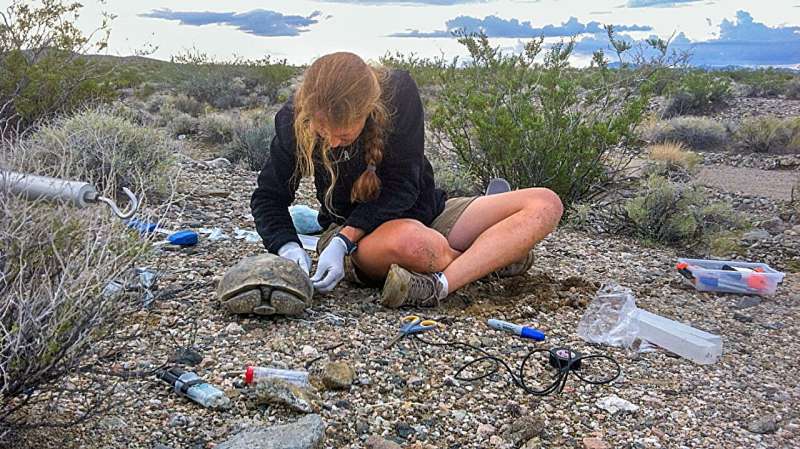This article has been reviewed according to Science X's editorial process and policies. Editors have highlighted the following attributes while ensuring the content's credibility:
fact-checked
trusted source
proofread
New method could help estimate wildlife disease spread

A new method could be used by biologists to estimate the prevalence of disease in free-ranging wildlife and help determine how many samples are needed to detect a disease.
This is important because wildlife agencies often lack the financial and labor resources to collect enough samples to accurately measure how widely a disease has spread. In order to prevent human and animal pandemics with wildlife origins, such as with COVID-19, key species must be effectively monitored for emerging diseases that can cross from animals to humans.
Until now, widely used formulas for determining sample sizes assume that animals in a population contract diseases independently of each other.
In reality, populations are often clustered, where individuals collect in family groups and share space and habitat. Due to such close proximity, individuals within the group are likely to spread contagious diseases among each other.
If it is possible to sample from the population at random, then sampling one individual in a family cluster of deer can suggest whether or not the rest of the family is also infected because all the members are correlated with each other. If random sampling is possible, then correlation between individuals within clusters reduces the effective population size, which suggests biologists could collect fewer samples to predict disease prevalence.
"The framework is so flexible, we can use it for any animals," said Krysten Schuler, assistant research professor in the Department of Public and Ecosystem Health in the College of Veterinary Medicine. "If we think about birds migrating and being in huge flocks, versus a moose that might be solitary and not interacting in groups, that impacts what our sample size should be."
Schuler is a co-corresponding author of the study, "Sample Size for Estimating Disease Prevalence in Free-Ranging Wildlife Populations: A Bayesian Modeling Approach," published in the Journal of Agricultural, Biological and Environmental Statistics.
First author, James Booth, professor in the College of Agriculture and Life Sciences and the Cornell Ann S. Bowers College of Computing and Information Science in the Department of Statistics and Data Science, is the other corresponding author.
For the method to work best, a disease must be contagious, wildlife species of interest should tend to cluster in a predictable manner, and samples should be randomly collected from individuals from as many different clusters as possible.
In the study, Booth, Schuler, and colleagues focused on Chronic Wasting Disease (CWD) in deer as a case study. Deer tend to cluster in family groups that average five individuals, and CWD is highly infectious.
One drawback to the method is that biologists are often constrained from conducting simple random sampling, and the practicalities of how samples are collected may actually increase sample size requirements despite the correlation with family groups.
Since biologists in the field don't always know how many animals to realistically sample to gain information on disease prevalence, an online app in development could help, Schuler said. Once available, a biologist could one day enter information about a particular animal, such as natural history, time of year, whether it's breeding, and how much those animals are in contact with each other to spread disease, as well as the disease itself.
The app would then provide an estimate of how many individuals to sample to gain a realistic understanding of disease prevalence.
More information: James G. Booth et al, Sample Size for Estimating Disease Prevalence in Free-Ranging Wildlife Populations: A Bayesian Modeling Approach, Journal of Agricultural, Biological and Environmental Statistics (2023). DOI: 10.1007/s13253-023-00578-7
Provided by Cornell University





















